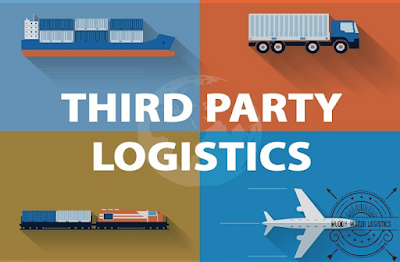3PL Industry - Third Party Logistics Industry- Size & Industry Trends
The third-party logistics (3PL) industry is a behemoth, playing a critical role in the global supply chain. By outsourcing logistics needs to 3PL providers, businesses gain access to expertise, infrastructure, and cost-efficiencies that can be difficult to achieve in-house. Let's delve into the current size, key trends, and the exciting future of this ever-evolving landscape.
Market Size
and Growth Trajectory
Estimates vary
slightly, but the consensus points to a massive and rapidly growing 3PL
market. According to a report, the global market size at a
staggering USD 1.29 trillion in 2024, projected to reach USD 1.68 trillion by
2029 at a Compound Annual Growth Rate (CAGR) of 5.48%.
Several
factors contribute to this growth:
- E-commerce Surge: The exponential rise of
e-commerce has fueled the demand for efficient order fulfillment services,
a core strength of 3PL providers. From warehousing to last-mile delivery,
3PLs offer solutions tailored to the fast-paced e-commerce environment.
- Focus on Core Business: Businesses are
increasingly focusing on their core competencies and outsourcing
non-essential functions like logistics. This allows them to streamline
operations and reduce costs.
- Globalization of Trade: As international
trade increases, companies need reliable partners to navigate complex
customs regulations and ensure smooth cross-border deliveries. 3PLs with
global networks and expertise can provide seamless support for
international expansion.
- Technological Advancements: The rise of
automation, blockchain, and data analytics is transforming logistics. 3PLs
that embrace these technologies can offer faster, more efficient, and
transparent services to their clients.
Emerging Players and the Competitive Landscape
The 3PL Industry
has traditionally been dominated by large established players like DHL, C.H.
Robinson, and FedEx. However, the landscape is evolving. We are seeing a
rise of:
- Specialized 3PLs: Catering to specific
industries or niche markets, these providers offer specialized expertise
and targeted solutions.
- Tech-enabled Startups: Leveraging the
power of technology, these startups are disrupting the market with
innovative logistics solutions and agile business models.
- Crowdsourced Logistics Platforms: These
platforms connect businesses with independent drivers and warehouses,
offering flexibility and cost-effectiveness for companies with fluctuating
needs.
This influx of
new players keeps the market dynamic and pushes established players to innovate
and adapt.
Challenges
and Opportunities in the 3PL Market
Despite the
positive outlook, the 3PL industry faces some challenges:
- Labor Shortages: Finding and retaining
qualified logistics personnel is a growing concern. 3PLs need to invest in
automation and workforce development strategies.
- Economic Volatility: Global economic
fluctuations can disrupt supply chains and impact demand for 3PL services.
- Rising Fuel Costs: Fuel price
fluctuations can significantly impact transportation costs, requiring 3PLs
to implement fuel surcharge mechanisms and optimize routes.
However, these
challenges also present opportunities. 3PLs that can navigate these issues by
adopting innovative solutions and building strong partnerships will be
well-positioned to thrive.
The Future
of 3PL: Embracing Innovation and Sustainability
Looking ahead,
several trends will shape the future of
the 3PL industry:
- Continued Technological Integration: From
artificial intelligence (AI) for demand forecasting to robotics for
warehouse automation, technology will play an even bigger role in
optimizing logistics operations.
- Focus on Sustainability: As environmental
concerns grow, there will be a greater emphasis on sustainable logistics
practices. 3PLs that prioritize green solutions like electric vehicles and
eco-friendly packaging will gain a competitive edge.
- Omnichannel Fulfillment: Consumers expect
seamless purchasing experiences across various channels. 3PLs will need to
offer integrated solutions that bridge the gap between online and offline
retail.
- Collaboration is Key: The complex global
supply chain demands strong partnerships. Effective collaboration between
3PLs, retailers, and manufacturers will be crucial for smooth and
efficient operations.




Comments
Post a Comment